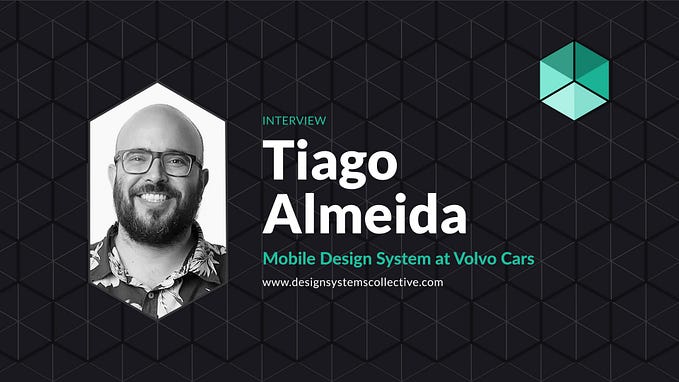
User Experience Design in Digital Transformation
Are you an exec who wants in on Digital Transformation?
Want to know the number one secret to success?
Well, here it is: Start with research and design.
Most businesses that attempt a digital transformation fail without an initial investment in research and design. That’s because they don’t validate risky ideas.
And that’s where User Experience (UX) Design comes in — validating your ideas and mitigating risk. But to be truly successful, you’ll want to invest in UX Design BEFORE, DURING, AND AFTER a digital transformation.
That’s why this article will take a look at how and why UX Design is the ongoing solution for making sure your digital transformation isn’t doomed from the start.
How to Get on the Right Track with Your Digital Transformation
What is digital transformation — besides THE new buzzword?
Digital transformation is nothing more than the deployment of products and services into your business’ ecosystem.
And what is UX Design?

It’s the process of creating and validating ideas. Emphasis on process. Ideally, you start the process before launching an idea as a product or service into your business’ ecosystem. And you continue to come up with and refine ideas through all stages of development and maintenance.
Basically, UX Design is making sure your ideas are good and that they’re going to work. That’s why UX Design saves you time, money, and pain. And that’s why it’s great to have a team of UX professionals around armed with Post-it Notes and dry erase markers. It’s their job to brainstorm, diagram, and sketch their way to a better future for your company.
So, getting started:
It’s best to think of UX Design as an integral and ongoing part of digital transformation. So, marry your digital transformation to UX. Start with it, tap your UX professionals all the way through, and end with it. Then rinse, wash, repeat. Until death do you part.
Why UX Design is Essential for Successful Digital Transformation
Great news!
Right now is the Golden Era for digital transformation and innovation-driven by UX Design. The profession is mature enough to generate real impact. So, it should be a no brainer to make the investment.
And here’s why:
Often, organizations can’t tolerate ambiguity. They have an idea and they want to jump right to production. No convoluted thinking in the middle. But it’s the thinking in the middle that tries and tests the idea so that it’s solid by the time it goes to production.
Enter design professionals.
Design professionals are the remedy to the ambiguity problem. They leverage ambiguity, incorporating it into their methods without causing fear or uncertainty inside the organization.

They achieve clarity through ambiguity by:
- Carving out a design path.
- Adhering to an effective design thinking process.
- Tapping talent and using the best software tools.
So, that’s why UX Design makes the digital transformation journey easier and is essential for its successful implementation.
But what does it look like in practice?
How to Turn an Idea into a Product so that You Don’t Fail
Ideation is the first step of UX Design.
You know that old saying — that there are no new ideas? Well that’s often true, but there’s always room for improvement.
That’s why ideation is the important first step.

Ideation is the process of generating and communicating ideas. Here an idea is understood as a basic element of thought that can be visual, concrete, or abstract.
Initial ideas might branch off exploring different concept designs at very high and unrefined levels. But designers explore significant variations of these ideas.
Later, designers may try to clarify design issues at a finer granularity until resolution is reached. Of course, new, radical ideas may emerge at any time and designers can incorporate them. In the end, constant iteration leads to an amorphous wave of success.
But generating ideas without a goal and proper insights is a waste of time.
That’s where UX Design comes into play.
Armed with proven methodology like Design Thinking and Google Design Sprint, UX solves problems and finds solutions while also generating ideas.

Ideation and UX Design should be treated as early investments made before IT products and even markets exist. By conducting further UX research through shadowing, observing, and focusing on users’ needs, businesses always stay a step ahead. That leaves them well prepared with valuable insights, resulting in innovation.
“Innovation without execution is only ideation.” — Garry Lyons, Creator of MasterCard Labs
Pro Tip: Organizations and executives often use the words ideation, design, design thinking, invention, and innovation interchangeably. It is important to define these terms because they are not interchangeable. These terms will be explained later in the article.
They designate different parts of a process. The lack of a definition leads to a lack of tangible, measurable outcomes and the severe conflation of the innovation process. That further results in a lack of buy-in from senior executives, or worse, the failure of innovation projects.

Digital Transformation is Hard — UX Design and Design Thinking Can Help
Because there are no new ideas, innovation and transformation are cruel. They often destroy the old order, challenge the status quo, create risk, and overcome barriers.
But that’s how progress has been made throughout human history. Without it — no Olympics, no Nobel prizes. So, it’s not best to treat transformation as a simple or easy process.

Instead, think of innovation as the “flow of an idea.” Here’s what it looks like:
- Input — Ideas are injected.
- Growth — Ideas flow through an organization.
- Output — Ideas come out the other end as impact.
The truth is, while you need ideas for products, the most successful innovation starts with key insights derived from customers or in the field, or what I like to call the “frontlines.”
You can sit around and come up with ideas all day — but the real magic starts with user insights.
Insight can come from wherever you have frontline interaction with your customers — your field agents, salesforce, or programmers.
Once you’re equipped with user insights and perspective, you start the first stage of UX Design — the ideation phase. That’s when design thinking is first applied.
Remember earlier where I wrote that ideation, design, design thinking, invention, and innovation get used interchangeably?

Design Thinking and Digital Transformation — UX is More Than Looks
Design Thinking starts with defining a problem or finding a need and then formulating what to build. It goes beyond a vision or product-in-hand. It’s about understanding user needs, which reduces market risk. And it requires organizations to tolerate those high levels of ambiguity I mentioned earlier.
See, design is all about challenging and questioning the initial premise or problem statement. And organizations, especially those focused on efficiency, are often uncomfortable with the uncertainty that comes with that part of the process.
And the really bad thing that can happen?
That discomfort leads to applying design perspective as an afterthought.
Emphasis is placed on key product and business decisions instead. Design is nothing more than a “make it beautiful” appeal to aesthetics. There’s no room for negotiation or change, leading to conflict between the design team and the product owner or manager.
And that eventually results in failure.
What happens if you apply design thinking and succeed?
Agile Product Development — Turning Ideas into a Minimum Viable Product (MVP)
Agile product development is used in the context of software or digital project development. It is a methodology that ensures agility, flexibility, and adaptability during development using small-batch productions to create a minimum viable product (MVP).
The priority is to focus on desired customer outcomes where lower-fidelity systems evolve into a higher-fidelity system leading to an MVP.
Ideally, agile models should start after a product vision is established and the product owner has an idea of what product will be taken to market and what it will look like.
The truth is that the most successful innovation starts with bold key insights taken from customers or in the field — the frontlines as explained.
Since UX insights hold the clues for designing a successful product, gathering them should (again) be treated as an early investment. And the process should include a customer journey map, a service blueprint, a PoC, a prototype, and an MVP.

Lean Startup Model — Last Steps After Proper Design Thinking
The idea is to eventually get to the point where you’ve got a lean startup model.
The Lean Startup business model starts with a strong, defined product vision resulting in an MVP. From there, it’s about finding product-market fit through pivoting using a rigorous method-based approach.
The approach doesn’t create new ideas. Instead, it looks at user value through a product lens. If a business applies Lean Startup methods without understanding user needs, they are more likely to fail.
Design’s role in the process is to advocate for the user without sacrificing the business aspects of the process.
Conclusion
The important takeaway is that UX Design is necessary for a successful digital transformation.
Design and design thinking should be implemented as early investments and continue throughout product development.
Without a proper design process in place, it is highly unlikely that you’ll achieve product-market fit. Research, ideate, design, repeat. That’s the recipe for success.
Need help turning your ideas into realities?
At Iterators, we are prepared to help you with your digital transformation. We have the know-how and the experience to execute your ideas. Just get in touch and we’d be happy to discuss supporting you on your next digital journey!









